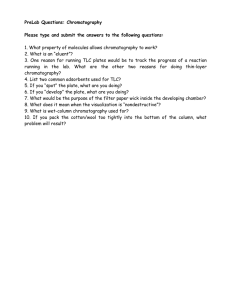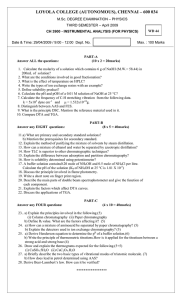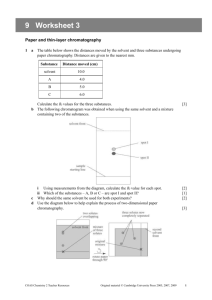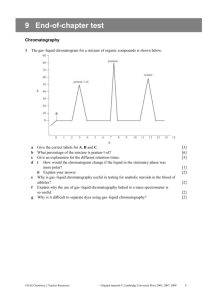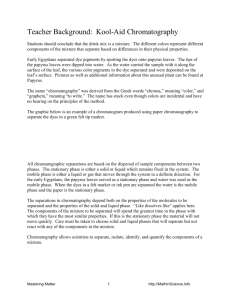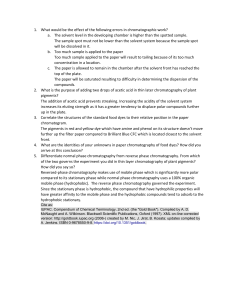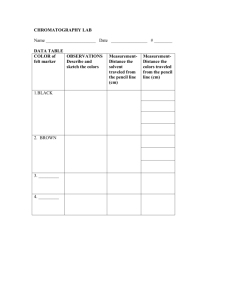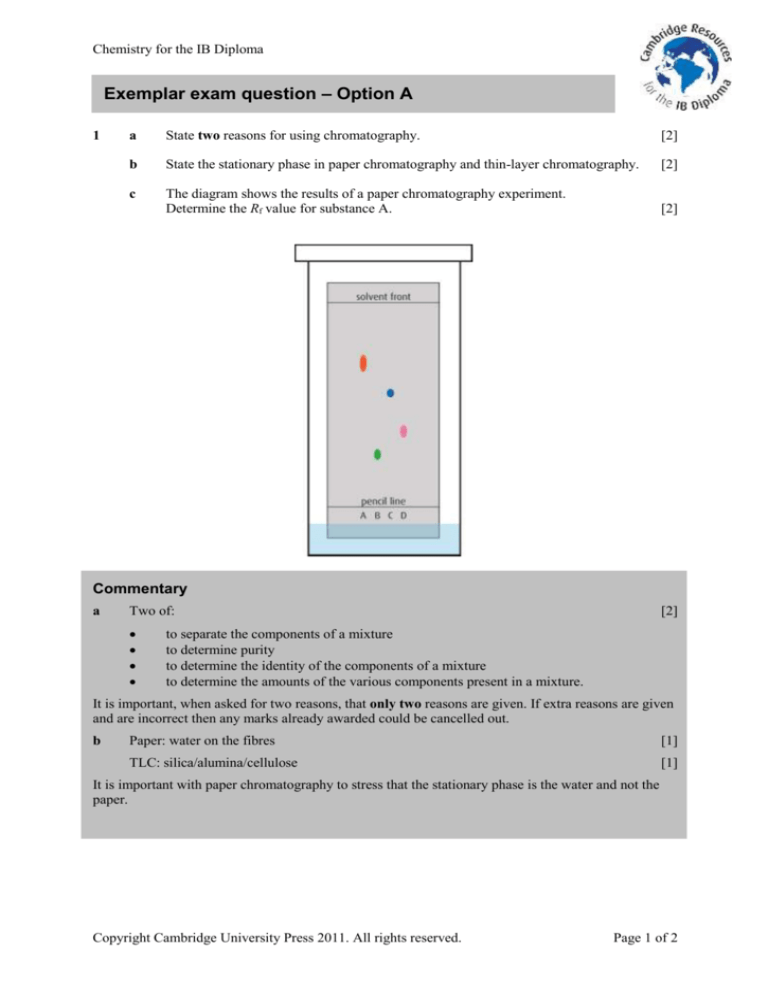
Chemistry for the IB Diploma
Exemplar exam question – Option A
1
a
State two reasons for using chromatography.
[2]
b
State the stationary phase in paper chromatography and thin-layer chromatography.
[2]
c
The diagram shows the results of a paper chromatography experiment.
Determine the Rf value for substance A.
[2]
Commentary
a
Two of:
[2]
to separate the components of a mixture
to determine purity
to determine the identity of the components of a mixture
to determine the amounts of the various components present in a mixture.
It is important, when asked for two reasons, that only two reasons are given. If extra reasons are given
and are incorrect then any marks already awarded could be cancelled out.
b
Paper: water on the fibres
[1]
TLC: silica/alumina/cellulose
[1]
It is important with paper chromatography to stress that the stationary phase is the water and not the
paper.
Copyright Cambridge University Press 2011. All rights reserved.
Page 1 of 2
Chemistry for the IB Diploma
c
Distances measured on this diagram are 61 mm to the solvent front and 43 mm to spot A.
[1]
Important points here are that the distance must be measured from the pencil line to the middle of the
spot and from the pencil line to the solvent front.
Rf =
43
= 0.70
61
[1]
Two significant figures are appropriate. Some tolerance will be allowed on the answer but it is usually
not very much and distances must be measured accurately. Rf has no units.
Copyright Cambridge University Press 2011. All rights reserved.
Page 2 of 2


